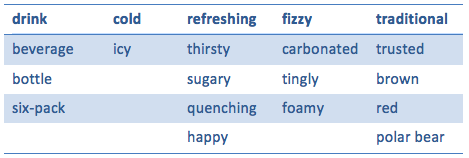Thoughts, feelings, and being…
Before you start talking about your company, your solution, and your specific product/service, take a few hours to determine your company’s “core essence,” a.k.a. your “corporate essence.”
A corporate essence is three words that describe the way your customers think and feel about your company.
More specifically, three concepts, accepting hyphenated words where a single word doesn’t explain the concept as clearly. These three words need to completely define your company, without leaving out any important components.
Three words, not two, and not four. Two is too few. Four is often too easy. Three is a challenge, and the results are generally better due to the difficulty in picking just three words.
Until you’ve tried this exercise, picking three words may seem easy. However, I’ve done this exercise dozens of times. Although the shortest session took only an hour, the longest took many hours with multiple revisions over the period of a month.
The easiest way to find the best three words is to start by finding all the possible choices of words. A technique called brainstorming works great for this.
Start by getting your whole team in one room, and, if possible, invite advisors who understand your company. The more people helping, the better.
One person writes down the suggested words (on a whiteboard or piece of paper) while everyone else shouts out suggestions. Do not stop to judge each word. Aim instead for as many words as possible, letting the words flow out as quickly as possible. Keep this up until the room fills with silence.
You should at this point have between a dozen and a hundred words. Next, start organizing the words, grouping them together into lists of related terms. This generally results in a handful of groups plus a few words that don’t seem to fit anywhere. Put all of those outliers in a separate list.
If you are lucky, you have just three groups, and the last step is to pick the best word from each group that describes the whole group.
If, however, you have more than three groups, then first look to see if any two groups can be combined under a single word that describes both groups. Then start discussing which of the (still too many) groups represents key concepts that describe your company and which do not. Continue that process until you’ve chosen three groups.
To better explain this process, let’s do an example for a well-known company, Coca-Cola. Here are a few dozen words describing Coke:
Grouping these results in the following:
Note that a few of these terms were changed from nouns to adjectives, to make them fit better into the groupings.
Now that the terms are grouped, it is time to narrow the five groups down to three. First is “drink.” All of Coca-Cola’s products are beverages, and thus this category seems needed. “Cold” has only two terms, so we move “cold” and “icy” into the “refreshing” category, which, like “drink,” seems a key attribute of the brand. That then leaves “fizzy” and “traditional.” Like “cold,” “fizzy” could be argued to be part of what makes the drink “refreshing,” whereas given over 100 years of history, Coca-Cola is very much a traditional brand.
The results of that consolidation are: drink, refreshing, traditional.
This is good but not the end of the core essence exercise. The next step is to try out the other words from the group to see if they are better fits for the core essence or if they fit better with the other two. Sometimes changing the order makes this easier, as often the three words form at least a partial sentence. And while iterating through choices, break out a thesaurus to look for related words that did not appear in the brainstorming session.
Iteration #2 for Coca-Cola: refreshing, favorite, beverage.
Of all the “refreshing” words, that word seems to be best. “Traditional,” however, has overtones of stodgy and old-fashioned. A better choice to convey “common,” “trusted,” etc., is “favorite.” And lastly, Coca-Cola is first and foremost a “beverage” company. That noun works better than the verb “drink.” A more grown-up choice for a grown-up company.
At this point, when you think you are happy with the results, the next step is to look at the three words and think about what other companies they work for or apply to. In the above example, these would fit Pepsi, although “favorite” seems more of an aspirational choice for Pepsi, as they have been second in market share to Coca-Cola for decades. Gatorade might fit these words, but note that Gatorade is a brand owned by Coca-Cola. Looking more broadly, while these three words might work for Starbucks, that brand would no doubt include “coffee” in their core essence, just as Guinness would no doubt include “beer.”
Next, double check that you didn’t miss anything. For the company Coca-Cola (versus the cola beverages), we need to ensure we don’t exclude other key components of the company, like Minute Maid juices or Dasani bottled water. For those brands, “favorite” might be aspirational, but overall it is hard to argue that Coca-Cola is not the world’s favorite beverage brand.
Lastly, before we start using the results, do one last check. Are any of the words too generic? Too often, when I work with teams on their core essence, they pick words like “service” or “trusted” or “simple.” All companies providing a service fall into “service.” That word adds no value, so go back and pick a different topic. Similarly, all companies want to be “trusted.” Why should they trust you? Pick a word that conveys that reason, or again go back and look at the topics you left out. Same with “simple.” Few companies aim to solve simple problems with complex solutions. Most companies instead strive to solve complex problems with simple solutions. Unless you are Apple or Nest or another brand with a design ethos wrapped around simplicity, pick a better word.
It may take you three, four, or even ten iterations before you are satisfied. That is to be expected. Whether you are on iteration two or ten or twenty, once you start using your core essence, you’ll most likely find that it needs more refinement. Iteration is to be expected, so don’t take it as a sign of any failure. It is, in fact, the path to success.
The next few chapters will show you how to use these three words.













